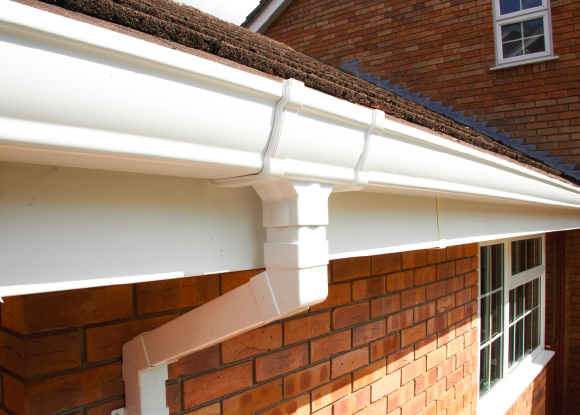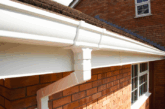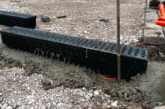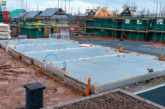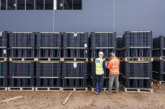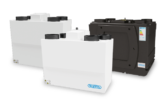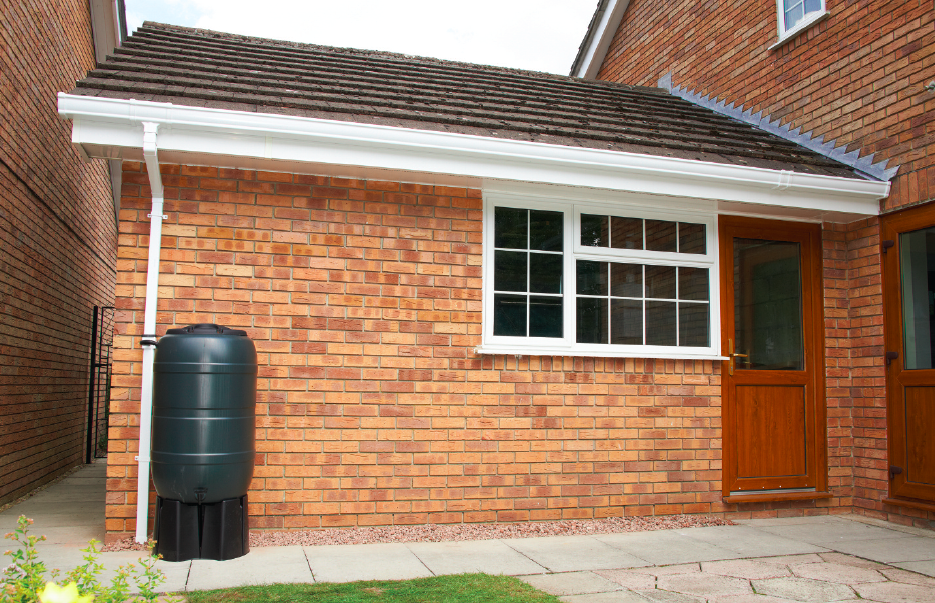
Steve Skeldon, Product Manager at leading plumbing and drainage manufacturer, Wavin, shares his insight on the importance of effective residential rainwater systems in dealing unpredictable weather patterns.
The UK’s recent weather has highlighted the critical need for effective rainwater management systems in residential construction. September 2024 brought record-breaking rainfall to southern England, with the Met Office confirming it as the wettest September on record for 10 counties. These extreme conditions were part of a year marked by significant weather variability, with extended dry periods abruptly followed by intense downpours, creating mounting challenges for homes and infrastructure.
Rising to the challenge
It’s no secret that the UK has been experiencing increasing levels of rainfall annually. This worrying trend, highlighted by the record-breaking September rainfall last year, underscores the necessity of investing in robust rainwater gutter systems for new housing developments. The challenge for housebuilders is to specify systems that provide optimal protection while maintaining the aesthetic appeal crucial to attracting buyers.
Effective gutter systems are essential for safeguarding properties against potential water damage, which can lead to structural issues, mould growth and increased maintenance costs. The science behind these systems involves directing rainfall from the building’s roof to an underground drainage system through gutters and drainpipes. However, the efficacy of this process hinges on the system’s capacity to handle the water volume from the roof, making system specifications a key consideration above ground.
Efficiency in rainwater management
Ensuring a gutter system’s effectiveness requires careful planning and consideration of several key factors. Critical components influencing a system’s capacity to handle the water volume it encounters include the gutter’s flow rate, its layout and the number and placement of drainage outlets.
The building’s architectural style also impacts the gutter installation process. For instance, level or angled gutters may reduce overall capacity compared to straight runs, which can maximise system functionality. By taking these elements into account, housebuilders can select systems that not only meet rainfall demands but also enhance efficiency and longevity.
Housebuilders and developers must also consider local rainfall patterns. Areas prone to heavy rainfall will require higher capacity gutters and downpipes, such as Wavin’s Osma DeepLine, which features a hydrodynamic outlet, to manage the increased water volume effectively. This ensures that homes remain protected even during extreme weather conditions, reducing the risk of water ingress and associated damage.
However, the responsibility for a successful gutter system continues long after the build is completed. Regular inspection and cleaning of gutters and downpipes are crucial to prevent blockages and ensure a system operates efficiently. Housebuilders should persist with educating homeowners about the significance of these maintenance activities to prolong the life and effectiveness of their rainwater management systems. Balancing functionality and aesthetics
The aesthetic integration of guttering systems is increasingly significant in modern housebuilding. Homebuyers are not only looking for functionality but also for properties that offer visual appeal. High-quality rainwater systems that blend seamlessly with a building’s design can significantly enhance curb appeal and property value. For example, Wavin’s Osma StormLine range features a classic ogee shape that combines optimum performance with visual appeal. The highfronted gutter profile conceals the edge of roof tiles and optional hidden hanging brackets, for a sleek, attractive roofline. Innovative features, such as the Flexiclip and unique concealing sockets, also make it easier and neater to connect gutters to fittings, ensuring a clean, permanently watertight joint that’s guaranteed to perform when installed correctly. These features not only improve the system’s functionality but also ensure that the installation does not detract from the overall aesthetic of the property.
The choice of materials for rainwater management systems can also impact both their performance and visual appeal. Modern formulations of PVC-U, offer durability and a range of colours and finishes, allowing housebuilders to match the system with the building’s design seamlessly. These materials are also resistant to corrosion and UV damage, ensuring long-lasting performance and minimal maintenance.
Adapting to changing climate patterns The recent rainfall levels in the UK highlight the importance of effective rainwater management in housebuilding – particularly for those systems collecting water above ground. High-capacity residential guttering and drainage solutions, provide essential protection against the adverse effects of extreme weather patterns and the potential for increased rainfall. By investing in these systems, housebuilders can enhance the resilience of new developments, protecting homes from water damage and future structural issues.
As the UK continues to experience more frequent and intense rainfall, the need for robust, efficient and attractive rainwater systems in new housing developments is more urgent than ever.
For more information about the Wavin Osma range, please visit www.rdr.link/dbe024

